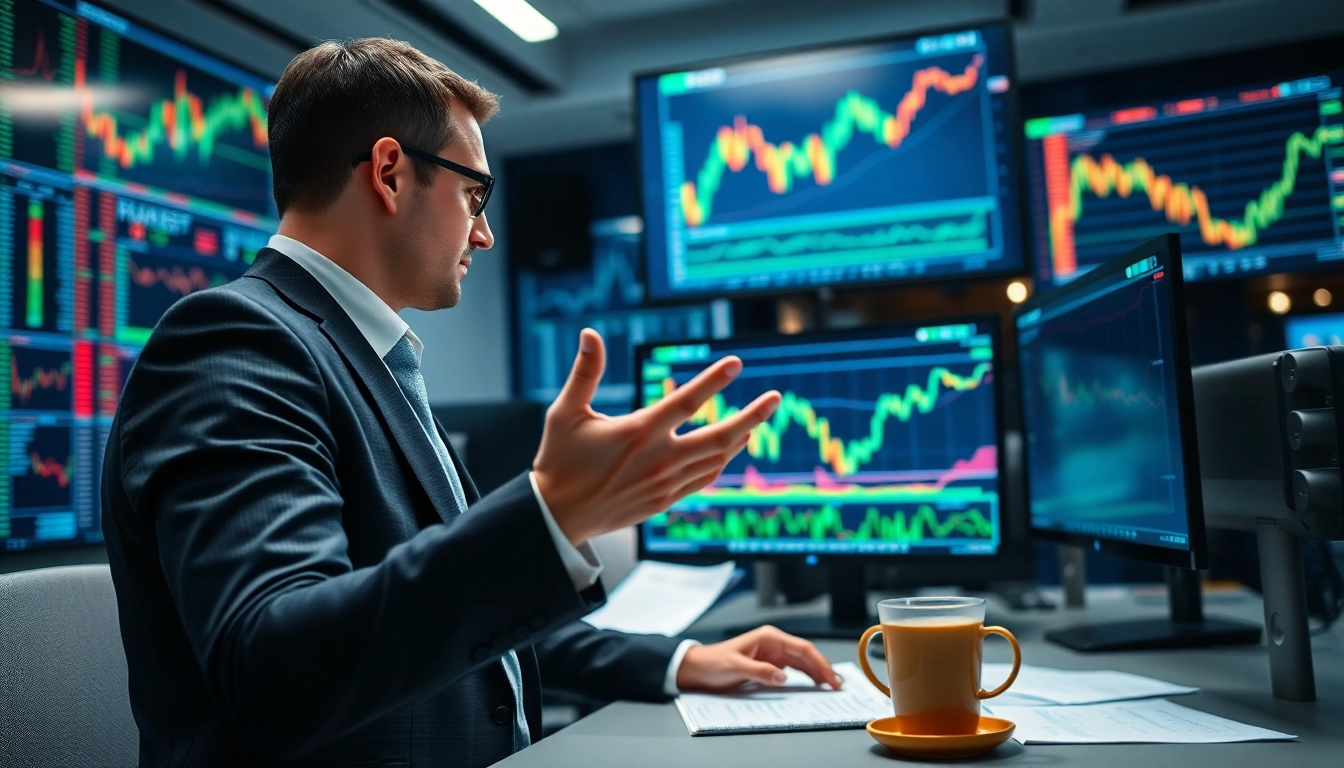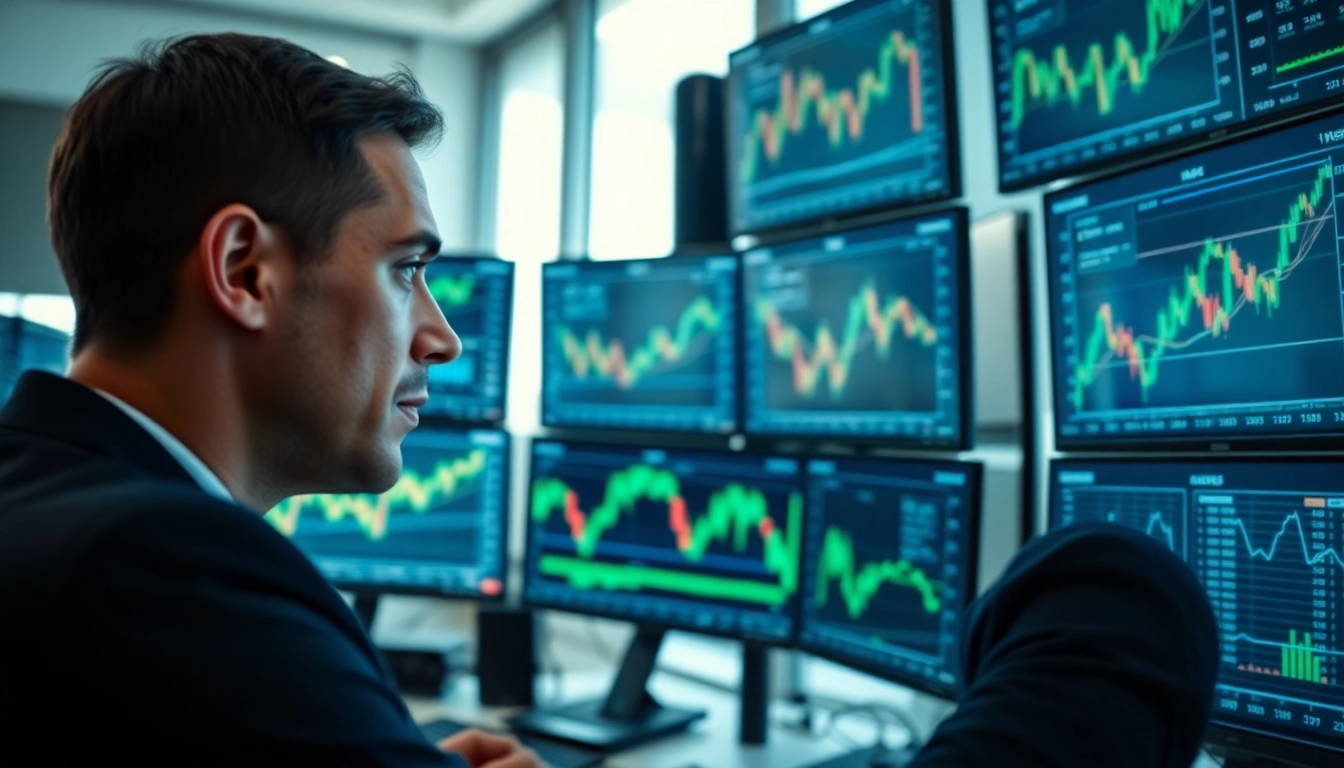
Understanding Trade Futures
Trade futures are financial contracts that obligate the buyer to purchase, and the seller to sell, an asset at a predetermined price at a specified time in the future. These contracts are primarily used for hedging and speculation in various markets, including commodities and stocks. The appeal of trade futures lies in their ability to allow traders to engage with significant price movements in the market while using less capital than they would need for direct investment. By facilitating this kind of trading, trade futures can provide opportunities for investment across a myriad of sectors.
What Are Trade Futures?
Trade futures refer to standardized contracts traded on exchanges that specify the delivery of a commodity or a financial instrument at a future date. The most common examples include contracts for agricultural products, metals, energy, and stock indices. Futures trading also encompasses a wide range of financial products, allowing traders to bet on price movements without owning the actual commodities or securities.
The Mechanics of Trade Futures
The mechanics of trade futures involve several key components, such as the underlying asset, the contract specifications (size, expiration, and price), and the trading process itself. Each futures contract has an expiration date, market lot sizes, and a specified price at which the contract can be bought or sold. Trading is executed on regulated exchanges, ensuring reduced counterparty risk where transactions are guaranteed by the exchange itself.
Key Terminology Explained
- Long Position
- Buying a futures contract with the expectation that the asset’s price will rise.
- Short Position
- Selling a futures contract with the expectation that the asset’s price will fall.
- Margin
- The funds that need to be deposited to enter a futures contract, acting as collateral.
- Mark-to-Market
- The process of daily settling of profits and losses in the futures market.
Benefits of Trade Futures
Leverage Your Investments
One of the standout benefits of trading futures is the ability to use leverage. This means traders can control a larger position with a smaller amount of capital. For example, if a futures contract has a margin requirement of 10%, a trader can open a position worth $100,000 with just $10,000 of their own funds. However, leverage amplifies both potential returns and potential losses, making it crucial for traders to manage risk effectively.
Hedging Against Market Risks
Futures contracts serve as powerful hedging tools for various market participants. Producers of commodities—such as farmers—can hedge against price drops by locking in prices for their products. Conversely, consumers can hedge against rising costs by securing future prices. This mechanism helps stabilize income and expenses, allowing businesses to plan more effectively.
Increased Liquidity Opportunities
The futures market is highly liquid, providing participants the ability to enter and exit contracts with relative ease. Liquidity is important as it reduces transaction costs and slippage—the difference between the price at which a trade is executed and the expected price. This characteristic makes futures an attractive trading vehicle, particularly for those looking to capitalize on short-term price movements.
Common Challenges in Trade Futures
Market Volatility and Its Impact
While volatility can offer opportunities for profit, it also poses considerable risks to futures traders. Sudden price movements can lead to significant gains or heavy losses. Traders must remain vigilant and prepared for rapid shifts, utilizing strategies like stop-loss orders to protect themselves from excessive losses during unpredictable market conditions.
Mistakes to Avoid When Trading
Trading futures is not without its pitfalls, and new traders often fall prey to common mistakes. These include over-leveraging, failing to establish a stop-loss strategy, and not conducting thorough market analysis. Being aware of these mistakes can help traders navigate the complex nature of futures markets more effectively, enhancing their chances of success.
Managing Psychological Factors
Trading futures can be psychologically taxing; the potential for high stakes can lead to emotional decision-making. Traders must cultivate discipline and patience, nurturing a mindset that allows them to follow their strategies consistently. Techniques such as maintaining a trading journal can help in building self-awareness about emotional responses, thereby supporting better trading practices.
Best Practices for Successful Trading
Creating a Robust Trading Strategy
A robust trading strategy serves as a roadmap for traders, guiding decisions based on clear rules and analysis. Successful trading strategies often combine technical analysis—using charts and statistical measures—to identify entry and exit points, along with fundamental analysis to understand market conditions driving price changes. Backtesting strategies against historical data can validate their effectiveness before putting real capital at risk.
Utilizing Analytical Tools Effectively
Technology plays a critical role in modern trading through various analytical tools. Charting software can help traders visualize historical price movements and identify trends. Technical indicators, such as moving averages and Relative Strength Index (RSI), provide insights into potential price actions. Learning to use these tools proficiently can significantly enhance trading efficiency.
Establishing Risk Management Protocols
Risk management is paramount in trading futures to safeguard against catastrophic losses. Establishing clear risk parameters—including maximum loss limits per trade, appropriate position sizing, and using stop-loss orders—creates a disciplined approach to trading. A risk management plan helps traders not only in daily execution but also in long-term success by preserving capital over time.
Performance Metrics for Trade Futures
Evaluating Your Trading Success
Tracking performance is essential for traders to understand their success rates and areas for improvement. Metrics such as win/loss ratio, average profit per trade, and overall return on investment (ROI) can provide clear insights into trading efficacy. Regular evaluation allows traders to adjust strategies and improve their skills incrementally.
Key Performance Indicators in Futures Trading
Key Performance Indicators (KPIs) similarly help traders measure performance against specific goals. Common KPIs in futures trading might include the Sharpe ratio, which evaluates risk-adjusted returns, and maximum drawdown, which measures the largest peak-to-valley loss. Understanding these metrics encourages a new layer of sophistication in assessing trading decisions.
Adjusting Strategy Based on Performance Data
Adaptability is crucial. By systematically reviewing performance data, traders can identify trending patterns in their data and adjust strategies where necessary. Whether it means reevaluating a trading system or altering risk management protocols, remaining flexible ensures long-term viability and growth in performance.








